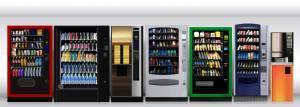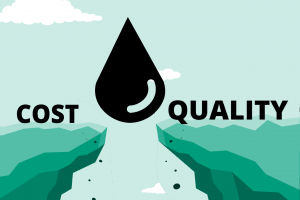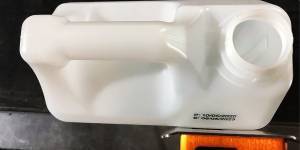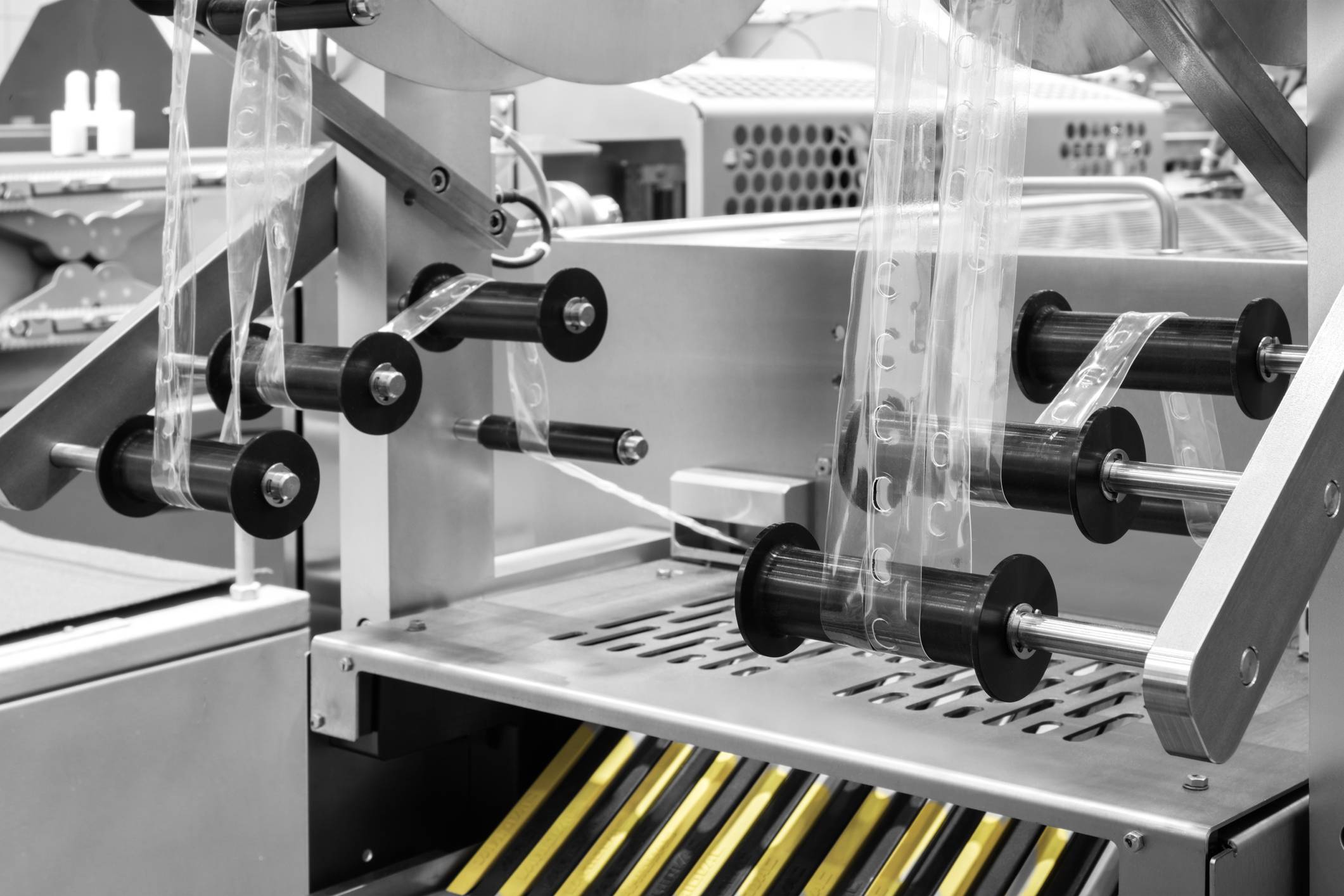
Thanks to the many advantages offered by hybrid printing systems, companies using flexo printing no longer consider digital inkjet printing a “disruptive” technology, and industrial inkjet printing is no longer dismissed as an inferior process.
The changing marketplace is driving flexo-only printers to adopt digital solutions because they allow shorter print runs and are suitable for many different types of labels. When these hybrid printing systems are implemented, workflows must be managed differently to maintain cost-effective production.
Hybrid printing expands the opportunities for narrow-web label printing and product packaging.
What is Hybrid Printing?
Hybrid industrial printing systems combine flexographic analog printing with inkjet printing on a single-pass production line. This setup leverages the benefits offered by both printing technologies.
Common Applications for Digital-Flexo Printing Systems
- Labels for household, personal care, food, beverage
- Security and pharmaceutical labels
- Labels for automotive and retail
- Flexible packaging
- Laminate tubes
- Shrink sleeves
Benefits of Flexo Printing
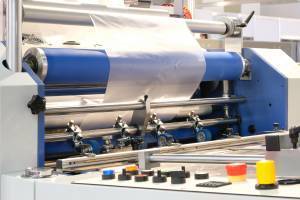
Flexographic systems are cost-effective for printing jobs with longer runs.
Without question, flexo printing is more cost-effective than inkjet printing for longer runs. The prepress costs of plates and setup are fixed costs, so flexo systems become more economical for longer production runs of more than about 3,000 meters.
Also, flexo systems print on a wide variety of porous and non-porous substrates, making it a versatile platform.
As for operating speed, flexo outperforms—but that difference is shrinking as inkjet printhead technology improves.
Consumers and brands are driving the adoption of digital printing, as shorter production runs are needed because of the explosive increase in SKUs that must be printed on consumer goods.
- Consumers are demanding more variety of product choices and package sizes.
- Brands want to capitalize on opportunities for mass personalization and customization of packaging to establish a stronger connection with customers.
For the same reason that inkjet printing is best suited for personalizing packaging using variable data, businesses can use inkjet systems to print variable data including serial numbers, tracking codes, and customer names.
Benefits of Inkjet Printing
Inkjet Printing Offers Environmental Advantages
- Less ink is used, leading to less waste.
- Cleanup is reduced, and no solvents or other cleaning agents are needed.
Benefits of Hybrid Printing Systems
See Inks for Packaging
Get Started
A combined flexo-digital printing system gives printers two production tools in virtually the same footprint.
For small and medium-sized jobs, overall production costs are lower. Hybrid solutions offer the advantage of incorporating variable data, which expands the services available.
Hybrid Printers are Greater Than the Sum of Their Parts
- Use of a broader range of substrates
- Fewer print stations needed
- More finishing options such as varnishing
- No need for separate workflows
- Less labor required
- Advanced features offer customization options
- Reduced production time
- Less downtime and increased efficiencies
Retrofitting Flexo with Digital
The growth of digital packaging print is expanding at a double-digit rate. According to a report from Smithers Pira, label printing over the next four years should see a 10% combined annual growth rate (CAGR). Direct packaging substrates are predicted to grow 25% year-over-year.
Those numbers are too large to be ignored. Adding digital to existing flexo production lines is a sensible business strategy to capture the growing demand in these segments.
Digital retrofitting provides certain advantages over investing in a new digital press. At the same time, investing in a separate digital system may not be feasible. A separate system also requires additional labor.
Kao Collins X-BAR
The Kao Collins X-BAR print module, for example, integrates digital inkjet capabilities with flexo printing systems, enhancing versatility, efficiency, and quality. Its features include compatibility with existing equipment, improved productivity, high-quality output, and cost-effectiveness. Typical applications include labels, packaging, security labels, automotive, retail, and specialty products like laminate tubes and shrink sleeves.
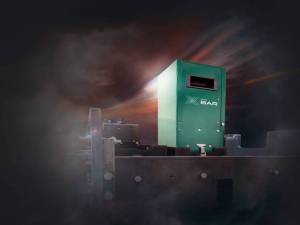 X-BAR Benefits
X-BAR Benefits
- High throughput and maximum uptime for improved productivity
- Premium quality output with sharp and clear results
- Needed flexibility with advanced inks for substrate compatibility
- Significant savings on consumables leading to accelerated ROI
- Fast restarts, zero charge shorts, and zero streakers to reduce downtime
- Future-proof production with the Kao Collins Universal Controller
- Higher DPI (1,200 dpi at 1,000 fpm) for superior print quality
Colordyne 3600
Colordyne Technologies is capturing a lot of attention for its 3600 Series UV printer. It prints digital CMYK plus White at speeds up to 246 feet per minute. The 3600 Series AQ is a water-based retrofit solution.
Breaking Even with Flexo and Digital Printing
The total printing cost and production time vary considerably when evaluating digital, flexo, and hybrid systems, depending on the product quantities needed.
To determine which offers the most cost-effective solution, consider multiple factors, such as setup, printing, post-production, and cleaning. A report from MPS, a Netherlands-based analog press manufacturer, compared the production times of the three printing options.
Short Production Runs
Hybrid printing systems require less overall production time than digital-only printing or flexo-only printing for production runs of about 1,600 feet of material. Considering job setup, digital-only printing requires the least time, and flexo-only printing requires the most time.
Medium Production Runs
For jobs of about 6,000 feet, hybrid and flexo printing systems come out about even for overall printing time. There is more setup time needed for flexo printers, compared to hybrid systems. Digital-only printing takes about three times longer to complete a job of this length.
Long Production Runs
Flexo printing wins the race for jobs of about 16,000 feet. The setup time for flexo is still higher than the hybrid option. For longer runs, digital-only printing again takes roughly three times longer, with time split about evenly between printing and post-production.
For all three jobs, setup time for flexo-only printing was significantly higher than either digital-only or hybrid printing.
Inks for Hybrid Printing
The most common hybrid printing systems use either UV-curable or water-based inks. Depending on the digital technology incorporated in the hybrid system, other types of inks could be used, including solvent-based inks, LED-curable, or EB-Curable inks.
Kao Collins produces a variety of inkjet inks for common hybrid systems. Many of these inks are available in bulk supply and can be packaged with private labeling for original equipment manufacturers (OEMs).
Contact Kao Collins for the right inkjet for hybrid printing of labels and other materials.
Frequently Asked Questions
Hybrid industrial printing systems combine flexographic analog printing with inkjet printing on a single-pass production line. This leverages the benefits of both printing technologies.
Combining flexo printing and digital printing expands the list of possible substrates that can be printed. This includes printing labels for household, personal care, food, beverage and pharmaceuticals, flexible packaging, laminate tubes, and shrink sleeves.
The combination of digital printing and flexo printing in a hybrid system offers the most cost-effective solution for both long and short printing runs. The digital printing system is well-suited for printing variable data such as personalization and coding. Combining the systems creates a small equipment footprint.
Yes, digital technology can be integrated into existing flexo presses, allowing businesses to enhance their production capabilities without investing in entirely new systems. This retrofitting offers a cost-effective way to meet growing market demands.
The Kao Collins X-BAR print module integrates advanced digital inkjet capabilities with existing flexo systems, providing high-quality output, improved productivity, and flexibility with advanced inks. It also offers cost savings on consumables and ensures high uptime with reduced downtime.



